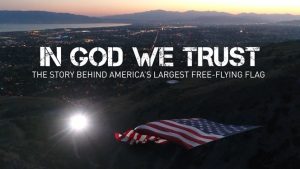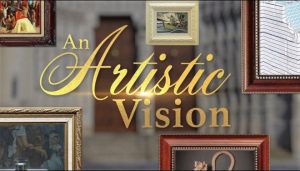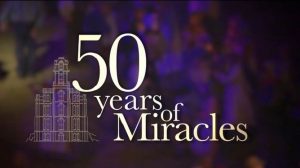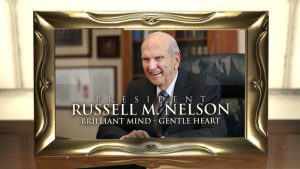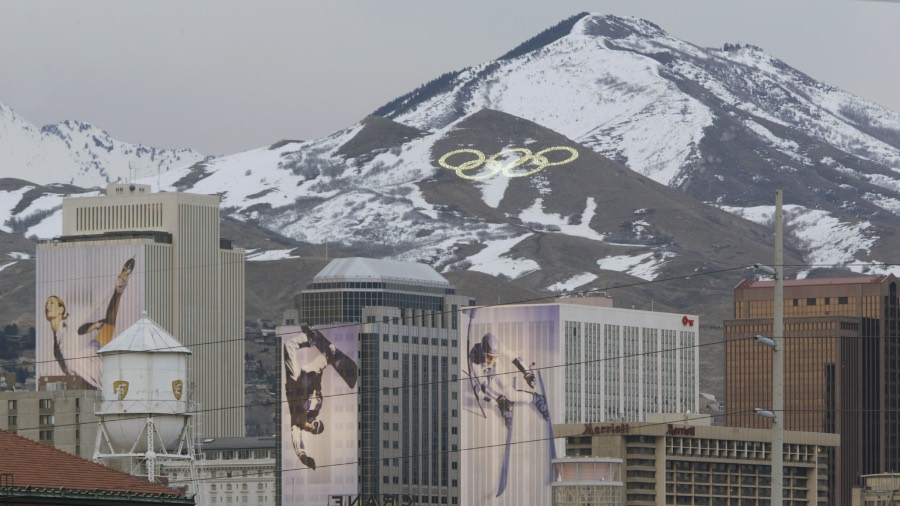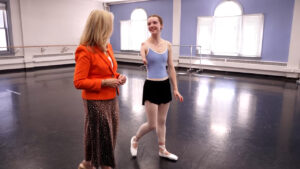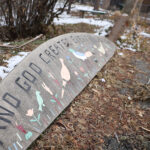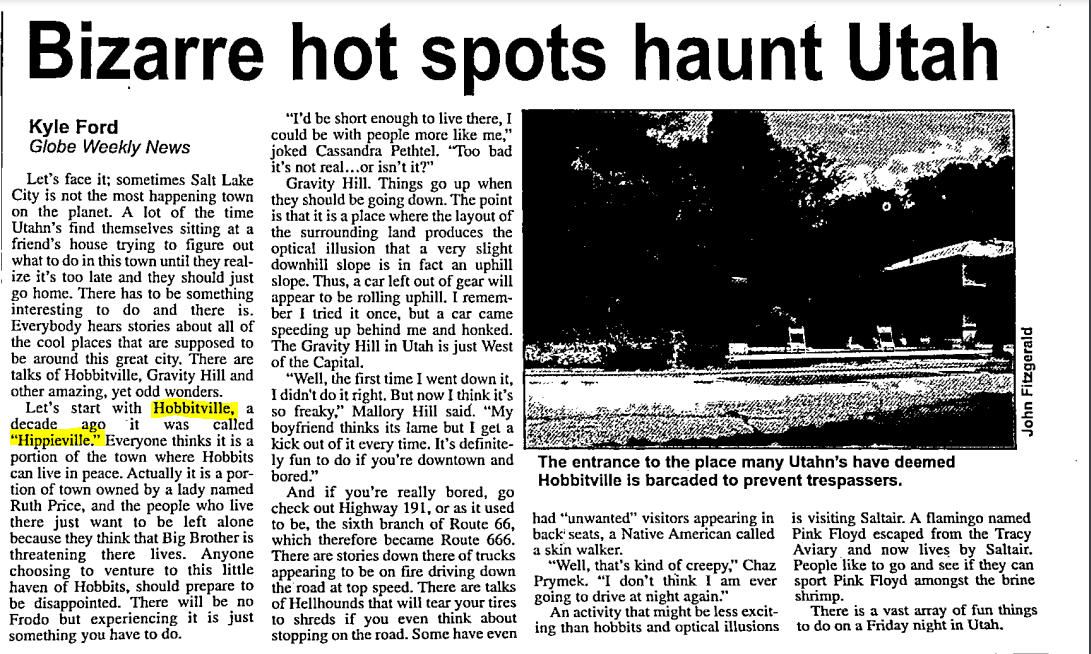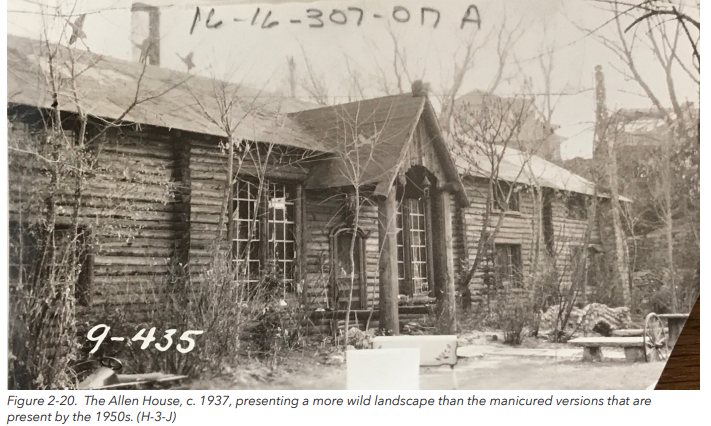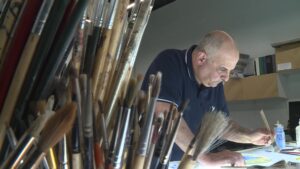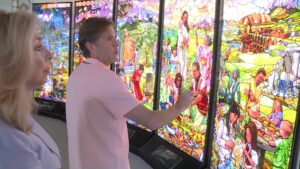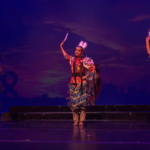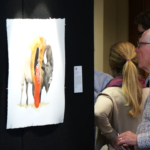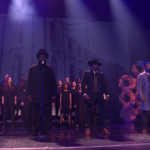An Artistic Vision
NEW YORK — Artists, scholars, and musicians come together for the first-ever Mormon Arts Center festival in New York City.
The gathering is dedicated to elevating, expanding and defining what Mormon Art looks like.
KSL Arts and Religion Specialist Carole Mikita shares the humble beginning of this movement and how the festival came to be.
Visit the studios and art spaces of both new and known Mormon Artists and hear the music created by some very talented Mormon composers.![]()
 This General Conference documentary is sponsored by The Piano Guys. Come spend an evening with The Piano Guys when they perform live at Vivint Smart Home Arena December 8th. Tickets are on sale now at all Smith’s Tix locations and the venue box office.
This General Conference documentary is sponsored by The Piano Guys. Come spend an evening with The Piano Guys when they perform live at Vivint Smart Home Arena December 8th. Tickets are on sale now at all Smith’s Tix locations and the venue box office.
New York City’s First-Ever Mormon Arts Center Festival
The first-ever Mormon Arts Center Festival in New York City united artists, scholars, and musicians to show Mormon Art. This gathering helped to elevate the concept of Mormon Art. It also attracted a lot of attention both from the Mormon community and others.
KSL Arts and Religion Specialist Carole Mikita shares the humble beginning of this movement and how the festival came to be. Visit the studios and art spaces of both new and known Mormon Artists and hear the music created by some very talented Mormon Composers.
General Conference Documentaries
You can watch more General Conference documentaries like this one with the KSL-TV app. The app is free, with no cable subscription required, and available for a variety of Connected TV and smartphone platforms including Amazon Fire, Roku, iOS, Android and fourth-generation Apple TV boxes.
Special KSL general conference programming to feature patriotism, service and exclusive interview with new LDS prophet
SALT LAKE CITY — This weekend, KSL-TV will suspend its regular daytime programming and, along with airing LDS general conference, will air several inspiring, locally-produced documentaries addressing a wide range of topics.
All of the specials will be available on KSL-TV, KSL.com and on demand on the KSL TV app. Be sure to tune in to watch each of these specials.
Here is a schedule for these programs:
Saturday, March 31
9:30 a.m. – 10:00 a.m.: History of the Saints
Holy Ground, Sites Sacred to the Restoration: Palmyra
Each year, thousands of Latter-day Saints journey to the sacred sites of the Restoration to experience more fully what happened and where. It was at these sites where the LDS faithful believe God restored necessary truths and ordinances. Many come away understanding that these places have a sacred spirit about them that strengthens spiritual knowledge and faith. This special presentation is the first in a series that will take viewers all over the world to stand virtually on holy ground. This first episode journeys to Palmyra and Manchester, the very cradle of the Latter-day Saint Restoration. The stories, the events and the scenery that make this ground holy will be presented in vivid detail.
10:00 a.m. – 12:00 p.m.: General Conference
12:00 p.m. – 1:00 p.m.: Aid Amidst the Storm
Florida, Texas, Mexico, Puerto Rico, California — the list of areas affected by disaster in the last few months is overwhelming. Each place was impacted in different ways, but one thing they all had in common were the Mormons there among those who were offering aid. Whether in a sea of yellow Helping Hands vests or just neighbor to neighbor, members of The Church of Jesus Christ of Latter-day Saints were a force for good as they joined many others who were volunteering and providing support. See the heartwarming connections these volunteers made as they answered the call to serve amidst the storm.
1:00 p.m. – 1:30 p.m.: In God We Trust
Kyle Fox is defined by his patriotism, service and love of God. He’s an everyday citizen who, during a time when divisions are strong and many have lost hope, felt compelled to create a project that unites people around a common symbol of freedom. He set to work creating the largest free-flying American flag in The United States and then flew it across a 1,100-foot canyon near his home. His desire was to inspire greater patriotism in others and to strengthen the love of country within his community. His “Follow the Flag” project has become more than he could have imagined, has impacted thousands and has helped military families heal. Fox believes we all have a responsibility to be courageous, to speak out and to have hope. We’ll share the faces, places and inspiring stories surrounding this project.
1:30 p.m. – 2:00 p.m.: An Artistic Vision
Artists, scholars, musicians and interested observers will come together for the first-ever Mormon Arts Center festival in New York City in June. This gathering is dedicated to elevating the concept of why Mormon art matters. KSL arts and religion specialist Carole Mikita shares the humble beginning of this movement and how the festival came to be. Visit the studios and art spaces of both new and known Mormon artists, and hear the music created by some very talented Mormon composers.
2:00 p.m. – 4:00 p.m.: General Conference
4:00 p.m. – 5:00 p.m.: LDS News and World Report
__________________________________________________________
Sunday, April 1
9:00 a.m. – 9:30 a.m.: 50 Years of Miracles
Once a year the quiet community of Manti, Utah, is transformed into a hub of activity as thousands of people from around the world flock there to experience the Mormon Miracle Pageant. What began as a one-time performance at the foot of the Manti Temple has transpired into a half century of tradition. Join KSL news specialist Sam Penrod as he explores “50 Years of Miracles,” the story of the Mormon Miracle Pageant in Manti.
9:30 a.m. – 10:00 a.m.: Music and the Spoken Word
10:00 a.m. – 12:00 p.m.: General Conference
12:00-1:00 pm President Russell M. Nelson: Brilliant Mind, Gentle Heart
For decades, he served as an apostle and now, Russell M. Nelson has become the 17th prophet and president of The Church of Jesus Christ of Latter-day Saints. He came to church leadership from a career as a world-renowned heart surgeon. In an exclusive interview with him, we discover the many gifts and talents of a man with a brilliant mind and gentle heart.
His colleagues, friends and family members also offer insights and share stories of his faith as he traveled the world, and of his devotion as a husband, father, grandfather and great-grandfather. Those who know him best say President Nelson’s intense belief in the restored gospel of Jesus Christ makes him a leader for this time.
1:00 p.m. – 1:30 p.m. Voices of Strength
Whether it’s in business, education, community service or sports, you’ll find people who inspire others. In “Voices of Strength,” we profile these five women who have used their experiences and voices to help others. We share their stories and personal insights about faith, hard work and grief.
- Gail Miller: For a long-time, Gail Miller was known only as the wife of businessman Larry H. Miller. Today, she is known for her philanthropic work and service in the community. Her life may seem charmed, but Gail Miller has experienced challenges in nearly every aspect of her life: financial struggles, family trials and personal loss. Through it all, she had the courage to move forward and remain grounded in her faith. Gail Miller has recently released a book called “Courage to be You.” In it, she provides inspiring lessons from her unexpected journey.
- Sahar Qumsiyeh is a Palestinian convert to The Church of Jesus Christ of Latter-day Saints. She joined the LDS Church when she came to BYU to study math, and then returned to Palestine. She was a Relief Society president in Israel, who many times couldn’t get through the security checkpoints in Jerusalem to get to church. Her story is one of forgiveness and the healing power of the Savior. She has written a book called “Peace for a Palestinian,” where she shares her story of faith amid war in the Holy Land.
- Carol Decker: While she was pregnant, Carol suffered an infection which nearly took her life. The infection caused her to go blind, and she had to have both her legs and parts of her arms amputated. Since then, Decker has become an advocate for adaptive living, and is a motivational speaker. She epitomizes strength, perseverance, optimism and faith.
- Lisa Valentine Clark: You’ve probably seen her in any number of commercials or independent features. Clark is an actress, comedian, writer and producer. But she says her greatest roles are mother and wife. Clark and her husband are the parents of five children. During the last few years, as her career has taken off, struggles at home have become more challenging. Life and death have taken on new meaning for Clark who helps her husband progress through the life-altering stages of Lou Gehrig’s disease. She says, “When we don’t know where to begin, we begin with hope.”
- Justice Christine M. Durham: Durham knows what it feels like to blaze trails for others. For years, she was told that her dream to practice law was implausible because she was a woman. When Durham graduated from Duke Law School, fewer than 2 percent of the people practicing law were female, but this didn’t discourage her. Durham worked hard and eventually served as Utah’s first female district court judge and Utah Supreme Court justice. She is the only woman in the state to have been elected Chief Justice by her fellow justices. Durham credits her colleagues, family and faith for her success. At one point in her career, Durham was the highest ranking LDS Church member serving in the United States judiciary system.
1:30 p.m. – 2:00 p.m.: Miracles from Elsie
Three-year-old Elsie Mahe’s life was cut short after a tragic accident in the family home, but her legacy lives on. The Mahe family says while they didn’t receive their miracle for Elsie, there were many miracles from Elsie. Elsie’s organs were donated to save many lives, but the miracles go far beyond this. See how the sparkle and spirit of a little girl have helped to spread faith, love and kindness across the globe.
2:00 p.m. – 4:00 p.m.: General Conference
4:00 p.m. – 4:30 p.m.: The Rising Generation
Most performers are lucky to achieve fame after years spent in the trenches. But what do you say about a singing five-year-old who’s already been seen by millions on YouTube and network television? In “The Rising Generation,” you’ll meet a variety of young people who’ve already hit it big. From little Claire Crosby singing with her dad, Dave, to Lexi Walker, who’s recording and performing all around the globe, and Madilyn Paige, who made a splash on NBC’s “The Voice.” Then there are the family acts, like Jenny Oaks Baker & Family Four, who haul their instruments around the world to play. And sibling actors Mia, Anson and Ari Bagley thrill audiences onstage and on their hit family YouTube channel “Working With Lemons.”
You’ll find out how these local young LDS performers hold on to their values in a tough industry, stay driven yet well-rounded and how they’ve managed to see their hopes and dreams realized long before they thought possible.
4:30 p.m. – 5:00 p.m.: Family History 2.0
Think genealogy is digging through musty libraries and church basements? Think again. Family history research has come a long way in the past few years. Today you’re just as likely to uncover hidden mysteries on your smartphone or in your DNA results. Popular television programs like “Relative Race” have helped intensify interest in family history research. Program host Michelle King explores how modern technology is making your family research fun, engaging and memorable.
General Conference Available on the KSL-TV App
SALT LAKE CITY, UT – For the first time ever, viewers of General Conference will be able to live stream sessions on the big screen – and to watch them on-demand – with the KSL-TV app.
In addition to KSL-TV’s broadcast coverage, General Conference sessions will air live on the KSL-TV app at 10 a.m. and 2 p.m. MDT on Saturday, September 30 and Sunday, October 1. The app will also have all sessions available for later viewing on-demand.
The KSL-TV app is available for Amazon Fire, Roku, iOS, Android and fourth-generation Apple TV boxes — this means viewers aren’t limited to watching on mobile devices or scheduled timing: General Conference sessions can be watched on the big screen, whenever it’s most convenient.
To find the KSL-TV video app, search “KSL TV” in app stores.
General Conference Documentaries
In addition to providing sessions live and on-demand, all of KSL-TV’s General Conference documentaries will be available on the KSL-TV app. Simply select “Documentaries” in the ON DEMAND section (tap the remote control icon) – or search “General Conference.”
Documentaries this session include:
- History of the Saints: Respected scholars come together to answer questions and address concerns about Joseph Smith the Prophet.
- Choosing Happy: Key strategies to find happiness, with specific techniques to get through severe setbacks and sorrow.
- An Artistic Vision: The first-ever Mormon Arts Center festival in New York City, where artists, scholars, and musicians come together to elevate the concept of why Mormon Art matters.
- Civility: Changing the Conversations: Civility has taken a serious hit, but despite the trend toward negativity, there are positive voices working hard to make communication more civil.
The KSL-TV video app, found by searching “KSL TV”, offers live KSL-TV video streams along with an extensive library of on-demand news, entertainment, and sports content.
KSL has new and exciting ways to watch General Conference this year. In addition to KSL-TV 5’s broadcast coverage, General Conference will also be streamed live in the KSL-TV mobile and Connected TV apps (iOS, Android, Fire TV, Roku and Apple TV). No cable subscription required. And don’t worry if you miss anything or want to watch again later. All sessions and KSL Conference documentaries will also be available in the app on-demand.
Conference Sponsors
A lot of work and production goes into our Conference documentaries and coverage. Thank you to all of our sponsors: The Piano Guys, EDGEhomes, Deseret First Credit Union, Siegfried & Jensen and Living Scriptures.


General Conference Documentary Schedule
Here is KSL-TV’s programming documentary schedule for General Conference October 2017:
Saturday, September 30, 2017
- History of the Saints: 9:30-10:00 am
Joseph Smith is the Prophet of the Restoration and as such occupies a unique and singular place in Latter-day Saint history. Because of who he is and what he represents he frequently comes under attack by critics. This History of the Saints special brings together respected scholars to answer questions and address concerns about Joseph Smith the Prophet. - 50 Years of Miracles: 12:00-12:30 pm
Once a year the quiet community of Manti Utah is transformed into a hub of activity as thousands of people from around the world flock there to experience the Mormon Miracle Pageant. What began as a one-time performance, at the foot of the Manti Temple, has transpired into a half a century of tradition. Join KSL News Specialist Sam Penrod as he explores “50 Years of Miracles” the story of the Mormon Miracle Pageant in Manti. - LDS News and World Report: 12:30-1:30 pm
This one-hour semi-annual report explores some of the major news events around the world pertaining to The Church of Jesus Christ of Latter-day Saints. - Choosing Happy: 1:30-2:00 pm
Who doesn’t want to be happy? It’s one of the basic rights Americans were guaranteed when this country was founded — “life, liberty, and the pursuit of happiness.” But how much of your happiness is due to your circumstances? What portion is genetically determined? Who are the happiest people in the world? And, if you’re not happy—why not? Host, Michelle King talks to three experts who lay out some key strategies for finding happiness. You’ll meet several strong everyday people who’ve used those techniques to get through severe setbacks and sorrow. From dealing with the typical adversities life throws at you, to combating unexpected tragedies, addiction, and depression, you’ll be better prepared, once you’re armed with new tools and actually make the choice to be happy. - To The Rescue: 4:00-5:00 pm
Members of the LDS Church have been counseled to reach out and help refugees. KSL News Specialist Deanie Wimmer shows how this call to service has inspired many people to step outside their comfort zones to help those most in need. A young woman, drawn to help in whatever way she could set up a successful nonprofit organization that now provides thousands of pounds of needed items to those fleeing their dangerous homelands. Some members have traveled to refugee camps to show compassionate care, while others serve closer to home helping in their own communities. It’s a movement that is gaining momentum — it’s a desire to help those who cannot help themselves.
Sunday, October 1, 2017
- Connecting Roots: Freedmen’s Records: 9:00-9:30 am
The Freedmen’s Bureau Project has changed the very fabric of genealogy for African Americans. “Connecting Roots” explains the history behind this project and the personal stories about why this is so meaningful for so many families. - Family History 2.0: A New Generation of Genealogy: 12:00-12:30 pm
Think genealogy is digging through musty libraries and church basements? Think again. Family History research has come a long way in the past few years. Today, you’re just as likely to uncover hidden mysteries on your smartphone, or in your DNA results. Popular television programs like Relative Race have helped intensify interest in family history research. Program host, Michelle King explores how modern technology is making your family research fun, engaging and memorable. - An Artistic Vision: 12:30-1:00 pm
Artists, scholars, musicians and interested observers come together for the first-ever Mormon Arts Center festival in New York City. This gathering is dedicated to elevating the concept of why Mormon Art matters. KSL Arts and Religion Specialist Carole Mikita shares the humble beginning of this movement and how the festival came to be. Visit the studios and art spaces of both new and known Mormon Artists and hear the music created by some very talented Mormon Composers. - Members in Many Lands: 1:00-1:30 pm
Travel to far off places with News Specialist Ashley Kewish to see what life is like for Mormons around the world in India, Mali, Mexico, Jamaica, Austria, Brazil, and Ghana. Many of these members of The Church of Jesus Christ of Latter-day Saints are recent converts who have adopted a new lifestyle as they embrace the teachings of the Gospel of Jesus Christ. - Civility: Changing the Conversations: 1:30-2:00 pm
Civility has taken a hit lately. The art of disagreeing gracefully has been replaced with vitriol comments and caustic feelings. It seems no matter the topic, discussions in online comment boards, on social media sites, and in public gatherings have become increasingly more hostile. These disagreements affect our families, our schools, and our workplaces. Despite this trend towards negativity, there are voices working to change the communication—to make it more civil. We highlight these positive voices.
Paris Prepares For 100-Day Countdown To Olympic Games

PARIS (AP) — In Paris’ outskirts, a bright-eyed young girl is eager for the Olympic and Paralympic Games to end.
Paris prepares for Summer Olympics
That’s because the swimming club where 10-year-old Lyla Kebbi trains will inherit an Olympic pool. It will be dismantled after the Games and trucked from the Olympic race venue in Paris’ high-rise business district to Sevran, a Paris-area town with less glitter and wealth. There, the pieces will be bolted back together and — voila ! — Kebbi and her swim team will have a new Olympic-sized pool to splash around in.
“It’s incredible !” she says. “I hope it’s going to bring us luck,” adds her mother, Nora.
In 100 days as of Wednesday, the Paris Olympics will kick off with a wildly ambitious waterborne opening ceremony. But the first Games in a century in France’s capital won’t be judged for spectacle alone. Another yardstick will be their impact on disadvantaged Paris suburbs, away from the city-center landmarks that are hosting much of the action.
By promising socially positive and also less polluting and less wasteful Olympics, the city synonymous with romance is also setting itself the high bar of making future Games generally more desirable.
US Women’s soccer team @USWNT’s @Cdunn19, @roselavelle and Emily Sonnett join TODAY to discuss how they’re preparing for the Olympic Games, recent changes to the team, what they’re looking forward to, and more. @TeamUSA @nbcolympics #ParisOlympics pic.twitter.com/BlFvpVPiPf
— TODAY (@TODAYshow) April 15, 2024
Critics question their value for a world grappling with climate warming and other emergencies. Potential host cities became so Games-averse that Paris and Los Angeles were the only remaining candidates in 2017 when the International Olympic Committee selected them for 2024 and 2028, respectively.
After scandals and the $13 billion cost of the pandemic-delayed Tokyo Games in 2021, unfulfilled promises of beneficial change for host Rio de Janeiro in 2016 and the 2014 Winter Games in Sochi tarnished by Russian doping and President Vladimir Putin’s subsequent land grabs in Ukraine, the Switzerland-based IOC has mountains of skepticism to dispel.
Virtuous Summer Games in Paris could help the long-term survival of the IOC’s mega-event.
SPREADING BENEFITS BEYOND CENTRAL PARIS
The idea that the July 26-Aug. 11 Games and Aug. 28-Sept. 8 Paralympics should benefit disadvantaged communities in the Seine-Saint-Denis region northeast of Paris was built from the outset into the city’s plans.
Seine-Saint-Denis is mainland France’s poorest region. Thanks to generations of immigration, it also is vibrantly diverse, counting 130 nationalities and more than 170 languages spoken by its 1.6 million inhabitants. For Seine-Saint-Denis kids facing racial discrimination and other barriers, sports are sometimes a route out. World Cup winner Kylian Mbappé honed his silky soccer skills as a boy in the Seine-Saint-Denis town of Bondy.
Once heavily industrialized, Seine-Saint-Denis became grim and scary in parts after many jobs were lost. Rioting rocked its streets in 2005 and again last year. Members of an Islamic extremist cell that killed 130 people in the French capital in 2015 hid after the carnage in an apartment in the town of Saint-Denis and were killed in a shootout with heavily armed SWAT teams. That drama unfolded just a 15-minute walk from the Olympic stadium that will host track and field and rugby and the closing ceremonies.
Concretely, the Games will leave a legacy of new and refurbished sports infrastructure in Seine-Saint-Denis, although critics say the investment still isn’t enough to catch it up with better equipped, more prosperous regions.
Mamitiana Rabarijaona grew up close to the Olympic stadium, built originally for the 1998 soccer World Cup. He says it didn’t provide much of a boost for Seine-Saint-Denis residents. He believes the Olympics will be “a big party” and he will be among 45,000 volunteers who’ll be helping. But he is not expecting Olympic-related investments to magically erase Seine-Saint-Denis’ many difficulties.
“It’s like lifting the carpet and brushing the dust underneath,” he said. “It doesn’t make it go away.”
Team USA athletes took over the @TODAYshow in NYC to celebrate the countdown to the #ParisOlympics! pic.twitter.com/unNTWrqolK
— NBC Olympics & Paralympics (@NBCOlympics) April 15, 2024
Seine-Saint-Denis got the new Olympic village that will become housing and offices when the 10,500 Olympians and 4,400 Paralympians have left. It also is home to the Games’ only purpose-built competition venue, an aquatics center for diving, water polo and artistic swimming events. Other competition venues already existed, were previously planned or will be temporary.
“We really were driven by the ambition of sobriety and above all not to build sports facilities that aren’t needed and which will have no reason to exist after the Games,” Marie Barsacq, the organizing committee’s legacy director, said in an interview.
The hand-me-down 50-meter pool for Sevran will be a significant upgrade. The Seine-Saint-Denis town of 51,000 people was whacked by factory closures in the 1990s. Its existing 25-meter pool is nearly 50 years old.
Other Seine-Saint-Denis towns are also getting new or renovated pools — particularly welcome for the region’s children, because only half of them can swim.
“The ambition for these Olympic Games … is that they benefit everyone and for the longest time possible,” said Sevran Mayor Stéphane Blanchet. The Olympics, Blanchet said, can’t “carry on just passing though and then moving on without thinking about tomorrow.”
With the 2024 Olympics just 102 days away, @TeamUSA @USAGym athletes and hopefuls @brody1700, @sunisalee_, @griskenas_e, @kayladicello and @Yul_Shin0122 join us this morning to talk all about the road to Paris. @nbcolympics @nbcsports #ParisOlympics pic.twitter.com/9OVupeP17I
— TODAY (@TODAYshow) April 15, 2024
PARIS’ COSTS COMPARE FAVORABLY
At close to 9 billion euros ($9.7 billion), more than half from sponsors, ticket sales and other non-public funding, Paris’ expenses so far are less than for the last three Summer Games in Tokyo, Rio and London in 2012.
Including policing and transport costs, the portion of the bill for French taxpayers is likely to be around 3 billion euros ($3.25 billon), France’s body for auditing public funds said in its most recent study in July.
Security remains a challenge for the city repeatedly hit by deadly extremist violence. The government downsized ambitions to have 600,000 people lining the River Seine for the opening ceremony. Citing the risk of attacks, it shelved a promise that anyone could apply for hundreds of thousands of free tickets. Instead, the 326,000 spectators will either be paying ticket-holders or have been invited.
Privacy advocates are critical of video surveillance technology being deployed to spot security threats. Campaigners for the homeless are concerned that they will be swept off streets. Many Parisians plan to leave, to avoid the disruptions or to rent their homes to the expected 15 million visitors. With trade unions pushing for Olympic bonuses, strikes are also possible.
And all this against an inflammable backdrop of geopolitical crises including but not limited to the Israel-Hamas war and Russia’s invasion of Ukraine. As a consequence, the IOC isn’t allowing athletes from Russia and ally Belarus to parade with other Olympians at the opening ceremony.
Still, Olympics fans expect big things of Paris. They include Ayaovi Atindehou, a 32-year-old trainee doctor from Togo studying in France. The Olympic volunteer believes the Games can bridge divisions, even if just temporarily.
“The whole world without racial differences, ethnic differences, religious differences. We will be all together, shouting, celebrating,” he said. “We need the Olympic Games.”
‘Definitely an arts community’: A look inside the push to bolster the performing arts in St. George
ST. GEORGE — Most Utahns are likely familiar with Hollywood’s infatuation with southern Utah at this point.
Kevin Costner recently filmed his Western epic “Horizon: An American Saga” in St. George and fell in love with the area so much that he’s opening Territory Film Studios near the St. George Airport.
What people outside of the region might not be as acquainted with is the passion of the local arts scene.
St. George Musical Theater has been around for over 25 years, making it the oldest community theater in southern Utah. Surprisingly, it has never owned a venue of its own and has hosted its productions in the St. George Opera House, which was built all the way back in 1875.
But that is set to change.
“If anybody visits St. George, they know we are definitely an arts community,” said Bruce Bennett, president and artistic director of St. George Musical Theater.
“We think there’s a lot of room for the redevelopment of that area, and we want to be the catalyst for that redevelopment,” Bennett said. “We see this as a major initiative to create an arts district south of downtown.”
The new theater will be over 20,000 square feet and accommodate around 400 patrons — a big jump from the 125-person capacity at the opera house. Additionally, the new theater will be right across the street from an old Cinema 6 at 905 S. Main Street.
Bennett said the location is ideal in the sense that it will allow the theater to repurpose the Cinema 6 into what the theater is calling the Performing Arts Campus for more “community accessible arts programs.”

Locations for the new St. George Musical Theater building and the repurposed Cinema 6 are pictured. The St. George Musical Theater is expanding its footprint in St. George through the construction of new and improved theater and renovation of an old movie theater that will be home to a Performing Arts Campus. (Photo: St. George Musical Theater)
“We plan on doing tribute concerts, stand-up comedy nights, youth productions, dance studios and even a recording studio and a film screening room in those six auditoriums,” Bennett said. “Meanwhile, in the big theater across the street, we’re getting ready to turn those plans in to the city. Definitely a big, ambitious vision, and we’re so excited about it, and the community has been unbelievably supportive.”
Bennett added that over the years, the St. George Musical Theater has developed a loyal following, selling out almost every show at the St. George Opera House for the past three years.
This loyal following and appreciation for community arts is pivotal in bringing the new theater to town.
“It’s going to take the community to help us raise the money. Last year, in October, we had a one-night fundraising gala, and in that one night, we raised almost a million dollars. And we feel like that might be the most successful fundraising gala in southern Utah history,” Bennett said.
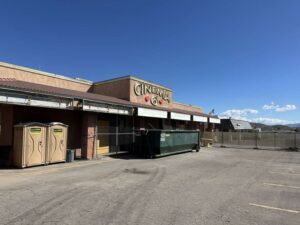
The old Cinema 6 building is pictured. The St. George Musical Theater is expanding its footprint in St. George through the construction of new and improved theater and renovation of an old movie theater that will be home to a Performing Arts Campus. (Photo: St. George Musical Theater)
He added that the total cost of the project — for the new theater and the renovation of the Cinema 6 — carries a total cost of around $16 million. So far, the theater has raised a little over half the funds.
Bennett said it was important to the theater to not burden the community by funding the new theater and campus through a tax increase, instead relying on donations. Additionally, the city, county and state have allocated money to arts projects, something Bennett said he and the rest of the St. George Musical Theater is extremely grateful for.
“We have absolute confidence that we’ll get to the finish line. Fundraising experts have told me that if you have over half of the money raised before you break ground on your primary project, you’re doing pretty well. … But we are very, very optimistic because the community has been incredibly generous over the years,” Bennett said.
Even as St. George and southern Utah experience rapid growth, Bennett said he sees the arts as a magnet for the community.
“We feel like we’re not just pursuing a passion — we’re doing something that’s incredibly important to the community,” Bennett said.
Bennett takes a lot of pride in the fact that the new theater will be the first brand-new, community-centered performing arts venue in St. George since the opera house was built in 1875.
“Everything we do at St. George Musical Theater is community-based. All our performers are local, all of our production team members, directors, music directors, choreographers — all local; backstage help, ushers, house managers — all local; and, of course, our technical crew, all local people,” Bennett said. “It’s very distinctive in that regard that it is based in the community, it’s run by the community, and the community itself benefits from it so it is quite unique and inspiring.”
The demolition of the Cinema 6, which will become the Performing Arts Campus, is already underway and Bennett said the hope is to break ground on the new theater by the end of the summer.
Anyone interested in donating to the construction and renovation can do so here.
*KSL TV does not assure that the money deposited to the account will be applied for the benefit of the persons named as beneficiaries. If you are considering a deposit to the account, you should consult your own advisors and otherwise proceed at your own risk.
And the Oscar goes to … a movie most people have seen
NEW YORK (AP) — The Oscars are poised to do something on Sunday that they haven’t done in a very long time: Hand its top award to a blockbuster.
After years of favoring smaller movies like “The Shape of Water” and “Nomadland, ” the clear best-picture favorite “Oppenheimer” — with just shy of $1 billion in tickets sold — is steam rolling toward the kind of big-movie dominance the Academy Awards hasn’t seen in two decades.
Presenting your Best Picture nominees for the 96th #Oscars…
American Fiction, Anatomy of a Fall, Barbie, The Holdovers, Killers of the Flower Moon, Maestro, Oppenheimer, Past Lives, Poor Things and The Zone of Interest pic.twitter.com/OKdWE3qm9n
— The Academy (@TheAcademy) March 7, 2024
You have to go back to Ben Affleck’s “Argo” (2012) to find a best-picture winner that’s grossed more than $100 million domestically. Academy voters’ tastes have instead largely favored smaller independently produced films like “Moonlight,” “Nomadland” and “CODA,” an Apple release with zero reported box office in North America. Last year, the scrappy, distinctly un-Oscar-like indie “Everything Everywhere All at Once” played the role of awards-season underdog until it became an unlikely Academy Awards heavyweight.
But even “Argo,” which walked away with three Oscars after grossing $232.3 million worldwide on a $44.5 million budget, isn’t much of a corollary to “Oppenheimer.” For that, you need to rewind to the 2004 Oscars, where Peter Jackson’s “The Lord of the Rings: Return of the King” — a $1.16 billion smash — took home 11 Oscars. That’s more the kind of wall-to-wall sweep expected Sunday for Christopher Nolan’s J. Robert Oppenheimer biopic.
Post by @oppenheimermovieView on Threads
It’s a reversal all the more striking because the 20 years since “Return of the King” have belonged, overwhelmingly, to the blockbuster. It’s a period that’s included “Avatar,” “Black Panther,” “Top Gun: Maverick,” “The Dark Knight” and the entire run of the Marvel Cinematic Universe. It’s a film culture shift that not everyone in Hollywood — including, most famously, this year’s best director nominee Martin Scorsese — has loved. That’s surely been a factor in Oscar voters embracing less traditional choices in recent years, like the 2020 best-picture champ “Parasite,” the first non-English language winner.
For years, big has been bad at the Academy Awards — a trend the film academy has watched unfold with sporadic panic. After Nolan’s “The Dark Knight” failed to be nominated for best picture in 2009, the academy expanded the best-picture category beyond five films. (It’s now 10.) In 2018, the academy proposed a new “popular film” award, but within weeks that was nixed when Oscar voters rebelled against it.
The ‘Barbie’ bonanza continues at the box office, ‘Oppenheimer’ holds the No. 2 spot
Such schisms are as old as the Oscars. The first Academy Awards, in 1929, split its top award in two: Outstanding Picture (which went to William Wellman’s dazzling WWI fighter plane action film “Wings”) and Best Unique and Artistic Picture (which went to F. W. Murnau’s silent masterpiece “Sunrise”).
THR is looking back through all of the #Oscars Best Supporting Actress winners since 2000 pic.twitter.com/4NoLICTELP
— The Hollywood Reporter (@THR) March 7, 2024
When more widely seen movies are in contention at the Oscars, more people have historically tuned in. The most-watched Academy Awards ever was when “Titanic” ruled the 1998 Oscars, winning 11 trophies. Some 57.3 million viewers watched James Cameron declare “I’m the king of the world!”
This year, there are not one but two billion-dollar blockbusters in the Oscar mix, in “Oppenheimer” and “Barbie,” raising hopes for a telecast that has in recent years hovered closer to a third of the “Titanic”-year viewership. Last year’s ceremony was watched by 18.7 million viewers.
Christopher Nolan’s ‘Oppenheimer’ tops all Oscar nominees with 13; ‘Barbie’ snags 8
“It makes it 10 times easier,” host Jimmy Kimmel said in a recent interview. “When nobody has seen the movies — and that has happened, including years when I’ve hosted — you have no point of reference to go from.”
It can sometimes be overstated how much having a blockbuster to root for impacts Oscar ratings. The more significant factors tend to be long-term ones, like the decline of linear television and the overall splintering of pop culture. Year-to-year fluctuations are usually less drastic. Nearly as many tuned in to see Clint Eastwood’s “Million Dollar Baby” win best picture in 2005 (42.1 million) as they did the year prior for “Return of the King” (43.5 million).
.@billieeilish explains what it was like working with Greta Gerwig on “What Was I Made For?” for @barbiethemovie 🩷 #FallonTonight pic.twitter.com/NI3WHutChb
— The Tonight Show (@FallonTonight) February 26, 2024
“Barbenheimer,” though, was a rare phenomenon, and one the Oscars — which lavished a combined 21 nominations on the two films — was eager to embrace. That’s especially because the success of the two films stood in such stark contrast to what the majority in the film industry is currently experiencing.
Both films launched just as actors walked out in a strike that consumed the industry in a protracted battle over streaming, artificial intelligence and the future of the business. Labor strife isn’t over, either; this week, craft workers with IATSE and Teamsters Local 399 began negotiations with studios, talks that much of the industry will be closely watching even as it celebrates at the Oscars.
Congratulations to our remarkable writers, Greta Gerwig and Noah Baumbach, who are now nominated for the @WGAWest Award for Original Screenplay! #BarbieTheMovie pic.twitter.com/YHkJRjWp9f
— Barbie Movie (@barbiethemovie) February 21, 2024
More than that, “Oppenheimer” stands for a kind of filmmaking that many fear is increasingly obsolete in a Hollywood that’s struggling to find its way forward amid widespread contraction. Streaming revenues have lagged for all but Netflix. Production delays brought on by the strike has led to a downturn in moviegoing in 2024. The sheer, spectacular accomplishment of “Oppenheimer” — a talky three-hour drama that outperformed “Ant-Man” and “Aquaman,” combined — is a bright, shining exception.
“It certainly confirms our faith in what studio filmmaking can be,” Nolan said the morning of Oscar nominations.
The Oscars are always where Hollywood celebrates an idea of itself. Last year, Hollywood told itself with “Everything Everywhere All at Once” that, yes, it could still be boldly original. When “Parasite” triumphed, it was a chest-thump for Hollywood’s expanding internationalism.
This year, Hollywood will hang its hat on an old-fashioned kind of winner — a studio epic — full of awe for what’s possible and dread for what may be to come.
Follow AP Film Writer Jake Coyle at: http://twitter.com/jakecoyleAP
University of Utah highlights positive impacts of equity, diversity and inclusion programs
SALT LAKE CITY — Even as the equity, diversity and inclusion programs at Utah’s universities face massive changes stemming from GOP lawmakers’ charges that they serve too limited a pool and exclude white people, the University of Utah is lauding the impact the programs have had.
In a “scorecard” the U. released Monday, the university highlighted the impact of its division for equity, diversity and inclusion during the 2022-23 academic year. Among other things, the second-year retention rate among “EDI scholars” — students who took part in three particular equity, diversity and inclusion initiatives — was 94% at the start of the 2023-24 school year compared to 85% among the overall undergraduate student body.
“EDI scholar programs impact students from historically underrepresented groups who find themselves navigating an institutional culture and bureaucracy that can present unintended barriers,” reads the scorecard.
Broadly, the scorecard also offers a positive assessment of the objective of equity, diversity and inclusion programming, which had come under fire by Utah’s GOP lawmakers as too narrowly focused while they debated HB261 last month. The University of Utah’s diversity programming, in its current incarnation, is not quite 5 years old.
“Across EDI’s resource and cultural centers … university students have the opportunity to participate in a variety of programs, curriculum, networking and mentoring activities that strengthen their performance, bolster their sense of belonging and supercharge their post-graduation success,” reads the U.’s scorecard. The varied centers include the U.’s American Indian Resource Center; Black Cultural Center; Dream Center, geared to undocumented students and those from “mixed-status families”; and the Center for Equity & Student Belonging, geared to “underrepresented” students.
Diversity programming, broadly, aims to help minority and other traditionally marginalized student groups thrive in a college setting, but in approving HB261 last month, many Utah lawmakers argued the initiatives should encompass all in need, including white students. Per the new legislation, blasted by the Democratic minority in the Utah House and Senate, diversity programming at Utah’s public universities, public schools and other public entities is to be overhauled by July 1 to address the lawmakers’ worries. The Legislature’s Democrats and other HB261 foes viewed the bill as a step back in protecting the civil rights of students and others of color.
Here are other impacts of the U.’s diversity initiatives, according to the scorecard:
- The equity, diversity and inclusion resources and the university’s cultural centers “positively impact students’ sense of belonging across a number of important domains,” a survey of the programming found.
- First-year students participating in the equity, diversity and inclusion scholars programs had a higher grade point average in the 2022-23 school year, 3.43, compared to first-year students as a whole, 3.29.
- Participation in diversity events increased by 23% compared to 2021-22, visits to program websites went up by 6.3% and the number of followers to the initiative’s varied social media platforms went up by 20%.
“The division continues to generate more opportunities for student connection, belonging and success across the entire University of Utah campus and community,” reads the scorecard.
Separately, the university has come up with new details on how it plans to adjust to another provision in HB261, a prohibition on seeking “diversity statements” from job applicants. Such statements are meant to gauge job seekers’ views and experience related to diversity initiatives and students of color, but foes variously said they prod job applicants to think a certain way or deter conservative job applicants altogether.
In an online post updated last Thursday, the U. offered additional details on the impact of the change and preliminary guidelines for adjusting.
While the university will no longer ask for equity, diversity and inclusion statements, job postings may note that the school teaches students and trainees “with a wide variety of backgrounds,” the guidelines read. Job applicants can be asked about their experience working with students of varied backgrounds.
“You may also ask them to describe their strategy for teaching and/or mentoring the students/trainees that your department serves,” the university said.
To encourage a “broad pool” of job applicants, the university suggested asking for candidates “from all backgrounds” in job postings. “It is acceptable to indicate the University of Utah values candidates who have experience working in settings with students from different backgrounds and possess a strong commitment to improving access to, and success in, higher education for all students,” read the preliminary guidelines, still focus of fine-tuning.
The final changes to comply with HB261, however, are still in the works. “We will be working internally and with our peer institutions and (the Utah System of Higher Education) to develop guidance for our campus as we get closer to the July 1 implementation date of HB261,” U. spokeswoman Rebecca Walsh said.
Meantime, the leader of the U.’s Black Cultural Center, Meligha Garfield, will be leaving the post in March to take a job at Georgia Tech University’s Office of Black Culture, Innovation and Technology, according to a press release last Friday from the U. The center, one prong of the U.’s diversity initiatives, aims in part to bolster recruitment and retention of Black faculty, staff members and students.
In his tenure of some five years, “Meligha has played a pivotal role in fostering a sense of community and inclusivity for Black students, faculty and staff. As the director of the (Black Cultural Center), he spearheaded initiatives that celebrated the rich diversity of Black culture, providing a space for dialogue, artistic expression and intellectual exploration,” reads the press release.
Though diversity initiatives have come under fire from some who view them as exclusionary toward white people, Garfield said some programming at the Black Cultural Center was geared toward students of all backgrounds. The center held its grand opening in September 2019.
“These programs are designed to uplift not only African American students, but students of any ethnicity, faith tradition or individual personal identity,” Garfield said in a statement. “The cool thing is that we are able to attract a diverse array of students into our programs. No one is excluded.”
Walsh said Garfield applied for the Georgia Tech position early last fall last year and accepted a job offer before the beginning of the legislative session, ahead of the sometimes-heated public debate over HB261.
Beatles to get a Fab Four of biopics, with a movie each for Paul, John, George and Ringo
NEW YORK CITY, New York (AP) — The Beatles are getting the big-screen biopic treatment in not just one film, but a Fab Four of movies that will give each band member their own spotlight — all of which are to be directed by Sam Mendes.
For the first time, the Beatles, long among the stingiest rights granters, are giving full life and music rights to a movie project. Sony Pictures announced Monday a deal that may dwarf all music biopics that have come before it, with the stories of Paul McCartney, John Lennon, George Harrison and Ringo Starr spread out over a quartet of films.
The films, conceived by Mendes, are expected to roll out theatrically in innovative fashion, with the movies potentially coexisting or intersecting in theaters. Precise release plans will be announced at a later date. Sony is targeting 2027 for their release.
McCartney, Starr and the families of John Lennon and George Harrison have all signed off on the project through the band’s Apple Corps. Ltd. Sony Music Publishing controls the rights to the majority of Beatles songs.
“I’m honored to be telling the story of the greatest rock band of all time, and excited to challenge the notion of what constitutes a trip to the movies,” Mendes said in a statement.
Each film will be from the perspective of a Beatle.
“We intend this to be a uniquely thrilling, and epic cinematic experience: four films, told from four different perspectives which tell a single story about the most celebrated band of all time,” said producer Pippa Harris. “To have The Beatles’ and Apple Corps’ blessing to do this is an immense privilege.”
The Beatles’ most famous forays into film were in their early years. Between 1964 and 1970, they appeared in five movies, including “A Hard Day’s Night” (1964) and the animated “Yellow Submarine” (1968). They’ve, of course, been the subject of many documentaries, most recently Peter Jackson’s 2021 “The Beatles: Get Back.”
In 2023, the Beatles reunited with the aid of artificial intelligence in the newly released song “Now and Then.” The recording was made possible by technology used by Jackson on “Get Back,” and featured a music video made by the New Zealand director.
Attempts to dramatize the Beatles’ story have been more sporadic and less impactful. A 1979 biopic, made when Lennon was still alive, called “The Birth of the Beatles” was produced with Beatles original drummer Pete Best as an adviser. The 1994 indie drama “Backbeat” chronicled Lennon’s relationship with Stuart Sutcliffe before the Beatles were famous. “Nowhere Boy” (2009) starred Aaron Taylor-Johnson as a teenage Lennon.
But in the last decade, music biopics have become big business. Box-office hits like “Bohemian Rhapsody,”“Rocketman” and “Elvis” have sent Hollywood executives chasing the next jukebox blockbuster. Over Presidents Day weekend, “Bob Marley: One Love,” produced with the Marley estate, was the No. 1 movie in theaters. A Michael Jackson biopic is in production.
“Theatrical movie events today must be culturally seismic. Sam’s daring, large-scale idea is that and then some,” said Tom Rothman, chair and chief executive of Sony Pictures’ Motion Picture Group.
The combination of Mendes’ team “with the music and the stories of four young men who changed the world, will rock audiences all over the globe,” Rothman said. “We are deeply grateful to all parties and look forward ourselves to breaking some rules with Sam’s uniquely artistic vision.”
Utah House OKs ‘sensitive materials’ bill governing removal of books from school libraries
SALT LAKE CITY — The Utah House has approved legislation that would potentially make it quicker to pull books with sexual content from school library shelves.
HB29, which passed the House in a 51-16 vote on Tuesday, would also allow for removal of challenged books from schools statewide if officials in three school districts decide the material violates state law and should be removed from their schools. The measure now goes to the Senate for consideration.
“It is time that we get behind protecting children in our schools, that it is a place of safety and decency for all children,” said Rep Ken Ivory, R-West Jordan, the bill’s sponsor.
He said HB29 aims to clarify HB374, the law approved by lawmakers in 2022 that creates guidelines for removal of books and other material from schools with sexually explicit passages and content. What’s more, its provisions requiring removal of books from all school libraries in certain circumstances, he argues, creates uniformity in judging the appropriateness of books in schools.
Rep. Carol Moss, D-Salt Lake City, spoke in opposition to the bill, as she did when the measure went before the House Education Committee on Jan. 23. She worries the measure allows for a tiny minority to dictate removal of books from school libraries statewide, thereby removing control from local officials.
“With this bill, just a couple of individuals can take away the rights of parents statewide to make choices that best fit their children’s needs. This is the antithesis of local control,” she said. Parents, she continued, “can and should be the ones that monitor their kids’ reading, not the government.”
The issue has been a thorny one as more and more books in school libraries across the state have faced challenges since the passage of HB374. In fact, the Bible, the Book of Mormon and the Quran faced challenges in Davis School District, seemingly from critics who thought HB374 went too far, though they were all ultimately retained. Ivory said the new measure stems from requests from some school officials for more clarity in the process of reviewing and removing books.
HB29 doesn’t change definitions of what’s regarded “sensitive” or sexually explicit material, thus subject to removal. Those guidelines date to 2007, Ivory said. Rather, the new measure would add specificity to the process of reviewing books challenged by parents, teachers or others in a particular school district.
Books deemed to be “objective sensitive material” — more blatantly sexual or pornographic — could be removed by school district administrators, without facing review by a committee, as is now required with all challenged books. Committees would review less blatantly sexual books initially deemed to be “subjective sensitive material,” gauging whether they should stay on shelves or not in part on their artistic, literary or scientific merit or lack thereof.
Books that violate “sensitive materials” guidelines in three separate school districts, whether through the “objective” or “subjective” review process, would be pulled from school shelves across the state. Likewise, books deemed in violation of the guidelines in two school districts and in five charter schools would also have to be removed from schools across Utah.
Moss expressed preference for the existing process that calls for all books to be reviewed by a committee serving the school district where a book is challenged. In Granite School District, within the Senate district she represents, she said 96 books last year faced challenges submitted by a total of six people. The review process for those books collectively took 100 hours, she said, and cost more than $100,000.
Despite the time and expense, “the process is working,” Moss said. “HB29 would upend that process.”
Utah Rep. Paul Cutler, R-Centerville, expressed support for HB29. It makes the review process “better,” he said. “It makes it cleaner.”
Two Republicans joined the House’s 14 Democrats in opposing HB29, Reps. James Dunnigan of Taylorsville and Norman Thurston of Provo.
Ballet West dancer overcomes the odds despite a limb difference
SALT LAKE CITY — Ballet West’s latest production features a young woman who has overcome a physical challenge.
Olivia Book is the only known dancer at a professional ballet company in the U.S. with a limb difference.
Ballet West’s “Stars and Stripes” always inspires its audiences. In this season’s production, there is even more to impress.
Olivia Book is a member of the cast from Ballet West II and is making a statement at the same time. Born with a right arm limb difference, she is unique in the professional ballet world.
“I really loved all the teachers here and all the friends I made, so I was really comfortable with coming here,” Book said.
From 3 years old, Book, from Ontario, Canada, loved to dance and watch videos of ballerinas.
“I just loved how elegant and graceful they looked, and I knew it was hard work, but they made it look so easy, and I really wanted to be like that,” she said.
Her parents supported her, her teachers encouraged her, and so did her friends.
“It was nice to always go to dance class with a friend so I didn’t maybe feel lonely if the kids were, say, not sure about my arm,” Book said.
Ballet West Artistic Director Adam Sklute discovered Olivia while judging a dance competition in Toronto.
“This was so inspiring that then and there, I offered her a position at the Ballet West Academy,” Sklute said.
When she was a child, Book’s father built her a special higher ballet barre.
“We kind of had to change the height of it to be perfect for my arm, and then I just brought it on the plane here and can use it here. It’s been really helpful,” Book said.
She came to Ballet West Academy in 2019, became a trainee in 2021, and then was promoted to Ballet West II, the second company, in 2023.
Book has been awarded Outstanding Performance and Special Commendation from Jury at the Youth American Grand Prix in 2019. She also received the Adam Sklute Scholarship in both 2020 and 2022. And has also appeared on The Next Step television show.
Ballet West has opened a door, and Book is stepping into her life here, amazing her teacher and fellow dancers.
“Talk about the strength that that woman has! The way that she has to hold herself, support herself! We take it for granted the use of both arms. And she has had to realign herself and do all of this and can achieve all of this in classical ballet,” Sklute said.
With her “Stars and Stripes” performance, Book is having her American Dream moment. She says she is grateful.
“Thinking about my life and how far I’ve come, I’m just so happy that I get to do this every day!” she said.
And Sklute says why not?
“I feel like it’s high time!” Sklute said.
Ballet West opens its production of “ Firebird,” “Fever Dream,” and “ Stars and Stripes” at the Capitol Theatre in Salt Lake City on Nov. 3rd. The performances continue through Nov. 11th.
Fact or fiction? Exploring the rumors and myths of Hobbitville
SALT LAKE CITY — Utah natives may have heard of “Hobbitville.” A mythical place full of mystical creatures and strangely protective little people who hated trespassers.
Hobbitville, a title given to Allen Park, sits almost directly across from Westminster College, along bustling 1300 East. Although the park lies at the heart of Sugar House, it feels a world apart from the busy world outside its gates. Park-goers enter a winding walkway into a nature solace with small homes and public art.
The park has been shrouded in myths since it closed to the public for 50 years- neglected and overgrown with unknown residents. The area, which is open now and owned by Salt Lake City, remains a strange landmark for those interested in Urban Legends.
Kat Maus is the Public Lands Planner for Salt Lake City. She too, knew of the legends of “Hobbitville.”
The stories
Rumors circulated that “small people” inhabited the overgrown community and were abrasive toward anyone who trespassed to see them. It’s unclear how the rumors started, but the myth was perpetuated by teenagers who would attempt to enter the property claiming to get a glimpse or be chased off by the small people living there.
“I also grew up in Salt Lake City so when I was in high school, I feel like it was like a right of passage to drive to Hobbitville,” Maus said.
It’s possible the beliefs began because of the mythical nature of some of the artwork and structures in the park. The overgrown trees and shrubbery along with old structures and niche artwork may have contributed to the sense that mythical creatures resided.
“In terms of the mythical side… there are pretty weird sculptures. There’s art mosaics intermingled throughout the whole site, there are like light posts that are really artistic but definitely give this air and mystique to the site, so probably a lot of that lends itself to some of those mysterious ideas,” Maus said.
The other possible explanation is the size of the buildings in Allen Park. The architecture of the homes and other buildings is small when compared to modern-day structures.
“I guess my perception as a high school student was just that it was a mysterious place and not being able to access it freely kind of made it a more exciting atmosphere,” Maus said.
Another aspect of the mystical park that remains today, is the unique wildlife that calls the park home.
“There’s a lot of wildlife in there too, so that definitely could have contributed something. There’s deer all the time, lots of raccoons, tons of cool birds.”
Fact or Fiction?
It’s unclear where the name “Hobbitville” originated or what exactly prompted the urban legend.
In order to understand, it’s helpful to know a bit about the original creators and owners. Here’s some of the facts:
The Allen Family owned Allen Park it was a private residence. Dr. George A. Allen was a doctor in SLC and lived there with his wife and his children.
Allen was very passionate about zoology and helped to start the Hogle Zoo.
“There is a rumor that he walked a tiger down Main Street to promote folks going to Hogle Zoo,” Maus said. “He had a lot of super exotic animals on the property, also rumored there was a hippo there at one point, he had tons of exotic birds, lots of weird animals and things like that.”
Allen’s wife, Ruth Larson Allen, was an artist and a writer. Together, they published a gazette on zoology and created Allen Park.
“He also built like kind of these cottages that you can still find there today as kind of communal living space. He was a professor at the University of Utah and so …he offered discounted rent or free room and board for students of his or those studying medicine at the University of Utah,” Maus said.
It was some of these interesting facts that may have led to rumors later on.
“I think his goal the whole time, which is kind of where I think the “Hobbitville” rumor began, was like this whole communal living space — like an oasis where you could like all work together. They used to cook for all the residents that lived there and share meals and things like that and I think that was his intention the whole time with all the structures,” Allen said.
As far as the little people that were said to inhabit the area, Maus said there’s no evidence little people ever lived in the area. The first mention of Hobbitville in text was in a 1994 article in the Daily Utah Chronicle, “Students, not hobbits, live in unique S.L. apartments.”
An article in the Salt Lake Community College Student Newspapers in 2005 suggests that the name “hobbitville” evolved from the name “hippieville” because of the transient people that lived there.
“What I’ve heard is we opened a survey right when we purchased the property, and we actually made a lot of connections with folks that used to live in Allen Park,” Maus said. “The story about having little people there was not the case…It was just regular people, anybody could live there.”
No evidence of little people in Hobbitville, so at least that portion is fiction.
“I also think because it was private property there was not a lot of information about it — the public couldn’t really go in there — there was just like a lot of questions as to what it was, especially being this kind of oasis still in the middle of the city surrounded by really dense development,” Maus said. “It was definitely kind of mysterious about what was going on. I think it was an easy opportunity for people to tell their own story about the space as well.”
The history, then and now
The Allen family moved to a farm on the property where Allen Park sits now, in 1931. They lived in a large Scandinavian log home and raised their children there.
By 1949, the area became open to the public on Sundays. The Deseret News wrote:
“Dr. George A. Allen has built a nature lover’s Arcadia where once was only an ugly abandoned weed patch. It took thousands of loads of dirt to fill up the deep canyon. And when it was filled Dr. Allen planted 35 different varieties of trees and dug deep wells, built bridges to ford the creek, made fountains and planted flower and fixed lily ponds. And he didn’t forget to include playhouses and treehouses for the children, and a pond for them to skate on in the winter and swim in the summer. He made mysterious trails along which small Lone Ranger could hunt spies. And he named each children’s house after a youngster who lived there. And so, on every gate you read of Camp George or Camp Sally.”
Over the years, other structures were built on the property.
“A lot of the architecture was built on site so he used a lot of carpenters and artists to kind of create the space in exchange for either discounted or free room and board. There are depending on your definition, 12-15 structures on site.”
Other structures were moved into the park from other areas.
“Pretty much the remainder of the structures are old mining cottages from Kennecott and Park City that were moved in fully constructed and placed on the site,” Maus said.
Maus said that the area became communal housing for a number of years.
“I believe it was 2018 when the last resident moved out and the property went up for sale. SLC bid on it in 2018 but it was purchased by a developer who tried to develop condos and it didn’t end up being able to go through,” Maus said. “So it went back up for sale and that’s when the city purchased it in 2020.”
Maus said that when the property was reopened to the public in 2020, they had over 1,000 people come to see it on the first day.
“Now we’re in the process of an adaptive reuse and management plan which will rethink the future of the park based on the information from the cultural landscape report and preferences we hear from the community,” Maus said.
The city had a historical architect analyze the conditions of the buildings, and for now, it’s recommended they keep people out.
“A few of them are in good shape and would not require a lot of resources to get back up to a place where people could visit, so that’s kind of our goal with this plan is to determine which ones we want to rehabilitate for use,” Maus said. “There are definitely some that would take a very significant amount of resources to get back up to where they needed to be. The main Allen lodge is our number one priority for restoration so we can get people in there.”
The city took public input for many months on what they should do with the property and then created three concept alternatives: or three visions for the future of the park for the public to choose from.
“There’s a public engagement opportunity right now until Oct. 27. We’re asking the public to give their opinions on these three concept plans,” Maus said. “They kind of highlight different ways to accentuate immigration creek and the natural areas, how we’ll reutilize the structures, [and] how many of the structures we want rehabilitated and then levels of programming in the park.”
She said the end product will likely not be one concept, but a puzzle piecing together multiple elements.
“Each of the concepts honor the info in the cultural landscape report and everything that’s historically significant about the park,” Maus said. “From then until early 2024, the city and the design team will be working to come up with this final concept as well as writing recommendations and plans for how to operate the site into the future.”
Allen Park does remain full of its quaint buildings and quirky artwork available to the public. You can take a survey or submit your public comment on the future of the park here.
“I think that there is definitely a mystique to the site that we are hoping to preserve through future planning processes,” Maus said.
Throughout October, KSL TV will be exploring haunts and legends around Salt Lake County. We’ll share with you what we learn – what’s fact and what’s fiction. Other stories include: The Rio Grande Depot, The Old Mill , Ted Bundy’s cabin/cellar, and Sugar House Park.
LEHI, Utah — An artist from Kuwait has traveled to Utah to work on what will become the largest stained glass art creation in the world.
The creation of Arabic calligraphy combines an artistic flourish with the beauty of the written word.
Ali Albabbah describes his art form as”… which is the most important art in the Arabic and Islamic civilization. And it can show a lot of beauty and a lot of feelings in our language.”
Albaddah is an internationally recognized artist from Kuwait whose works grace galleries in mosques and private homes. Human and animal images or depictions of nature are not found in Arabic and Islamic art, as Muslims believe those are all God’s creations and should not be imitated.
But Albaddah’s latest work is a first – he joins artists from Holdman Studios in Lehi to create a one-of-its-kind Sphere of Light – a building of stained glass. He said the piece would bring together religion, art, and architecture.
Tom Holdman, the Founder of Holdman Studios, was inspired to create the project.
“History of the world is written in art. The Arabic countries have flourished into this visual art form that is so elegant and then powerful,” Holdman said.
He said both art forms are ages old but are part of a new vision, which Albaddah agrees with.
“With the beauty of the Arab calligraphy and the beauty of the stained glass, we show a new kind of art, or we show the people a new thing,” Albaddah said.
Holdman showed KSL a nearly finished portion, the Seven Pillars of Humanity.
“There are good walls, and there are bad walls. Here’s the Berlin Wall, here’s an actual piece of the Berlin Wall, and we are tearing down walls to build bridges. And that unity leads to love,” Holdman said of the piece.
Two different art styles have come together in the creative process. Albaddah has discovered people who have become more than friends.
“Very beautiful people, very kind people… I didn’t feel like I’m working with strange people. And I told them many times, I am feeling like you are my family,” he said.
Gayle Holdman said her team feels the same.
“To create a piece of art that has the possibility to speak to the world, we need to speak with the world. So to be able to have Ali and his colleagues come and share with us their life experience … that’s beyond what we were hoping for,” Gayle said.
In addition to the richness of the colors in these stained glass creations, the artists believe they are making a statement.
“Love is better, more better than hate,” Albaddah said.
“Coming together, better than fighting each other. So, this is our message.” Tom added, “What better way to show the diverse beauty in all of us than the medium of mixing art glass.”
Sphere of Light will eventually be constructed at Thanksgiving Point as a place of reflection to show people of all cultures and faiths how much we have in common. The projected completion date is 2030.
Davis School District retains Bible in all school libraries
DAVIS COUNTY, Utah — The Bible is back.
The Board of Education of the Davis School District voted unanimously Tuesday to make the The Bible available in school libraries for all age-levels of schools, elementary through high school.
This reversed a previous committee-based decision that restricted the book on school shelves to high schools in the district. A committee tasked with reviewing books that fall under review for sexual content last week determined that the Bible will be retained at district high schools, but removed from all elementary and middle schools.
As part of the review process, that committee finding was reviewed when an appeal was filed.
The district also issued a statement that reads in part:
Some in the community have intimated that the initial committee’s decision, or the district’s policy/process have been intentionally manipulated to undermine Utah’s sensitive materials law (HB 374). This is wholly untrue.
The district has always acted with intent to uphold the law and maintain school libraries free from harmful material. As soon as HB 374 went into effect and guidance from USBE and the Attorney General’s Office was received, the district began revising policy and implementing library media reviews. To date, the district has conducted reviews for 60 books (37 were removed from all libraries due to bright line rule violations, 14 books were restricted at some school levels due to age appropriateness, and 9 were retained at all levels).
Utah lawmakers took a new look at the new state law after The Bible removed received a lot of attention.
The Education Interim Committee heard from multiple school districts and the Utah State Board of Education to get a feel for how a review of potentially objectionable books is going so far.
A lot of attention was on the Davis School District because of a review that led to the Bible being taken out of their elementary and middle school libraries.
Committees first determine whether a book contains material which violates the bright line rule outlined in Utah Code 76-10-1227.
If the book does not violate the bright line rule, the committee then considers age appropriateness of the book. Age appropriateness is determined by considering violent or vulgar content as well as whether the book – taken as a whole – has serious literary, artistic, political, or scientific value for minors.
There was also concern that the law’s so-called brightline rules — books that aren’t being followed as closely as some lawmakers would like.
These are a set of guidelines set by the law that are intended to clearly define certain types of content that should not be allowed because of the very explicit nature.
There was concern over one book in particular that is still in libraries in the Davis School District.
On top of that, some lawmakers feel the law is being unfairly portrayed as a book-ban.
“And this is what we’re constantly accused of, we’re trying to ban books about people of color, said Rep. Kera Birkeland, a Republican from Morgan. “We’re trying to ban books about LGBTQ people, and that’s false.”
Christopher Williams, Davis School District’s director of communication sent a press release; the full text is contained below the following video.
Davis School District Board of Education Meeting, Tuesday, June 20, 2023
The Board of Education of the Davis School District voted unanimously this evening to allow The Bible to be included in school libraries at all levels (elementary, junior high, and high school) – reversing a previous committee-based decision which restricted inclusion of The Bible to high school libraries only.
Background & Process
In December 2022, Davis School District received a request from a community member to review The Holy Bible (King James Version) to determine whether it should continue to be included in school libraries.
Utah Code 53G-10-103 requires school districts to include parents who are reflective of the community when determining if a book contains sensitive material. Davis District uses a lottery-selected review committee, with a parent majority, to comply with this law.
In accordance with Utah Code, guidance from Utah’s Attorney General (June 1, 2022 Memo), and guidance from the Utah State Board of Education (Model Policy), the District’s Library Media policy requires committees to use a two-step review process.
Committees first determine whether a book contains material which violates the bright line rule outlined in Utah Code 76-10-1227. If the book does not violate the bright line rule, the committee then considers age appropriateness of the book. Age appropriateness is determined by considering violent or vulgar content as well as whether the book – taken as a whole – has serious literary, artistic, political, or scientific value for minors. Consideration of a book’s value for minors is dependent upon reliable expert reviews, the committee’s own experience and backgrounds, and the committee’s assessment of community standards (USBE Model Policy & DSD Library Media Policy).
The initial review committee assigned to review The Bible determined that The Bible does not contain material which violates the bright line rule. It then considered age appropriateness of The Bible and determined that The Bible was age appropriate for continued inclusion in high school libraries, but not in junior high or elementary school libraries.
Within days of the announcement of this determination, the district received several appeal requests and immediately began processing appeals. District policy outlines the appeal process which requires an appeal committee — consisting of three district board members — to reconsider the determinations made by the initial review committee and make a recommendation to the full Board of Education for its consideration.
Appeal Committee Recommendation/Rationale
The appeal committee reviewed all relevant information pertaining to the original committee’s determination, as well as all information pertaining to appeal requests and public comments. The appeal committee determined that The Bible does not contain material which violates “bright line rule.” It hen considered age appropriateness of The Bible using the standards outlined in law/policy. Based on its assessment of community standards, the appeal committee determined that The Bible has significant, serious value for minors which outweighs the violent or vulgar content it contains. Therefore, the appeal committee considers The Bible to be age appropriate and recommended that it be retained in school libraries at all levels (elementary, junior high, and high school). The board accepted its recommendation unanimously in a public board meeting on Tuesday June 20, 2023.
Statement of District’s Intent
Some in the community have intimated that the initial committee’s decision, or the district’s policy/process have been intentionally manipulated to undermine Utah’s sensitive materials law (HB 374). This is wholly untrue.
The district has always acted with intent to uphold the law and maintain school libraries free from harmful material. As soon as HB 374 went into effect and guidance from USBE and the Attorney General’s Office was received, the district began revising policy and implementing library media reviews. To date, the district has conducted reviews for 60 books (37 were removed from all libraries due to bright line rule violations, 14 books were restricted at some school levels due to age appropriateness, and 9 were retained at all levels).
As with any new policy, the district’s library review process will likely require some revisions, but the Davis School District stands by the process currently in place. The committee-based process is thoughtful, methodical, respectful of varying perspectives, and compliant with Utah law. It allows for appeals to be considered when a committee’s decision seems to be at odds with community values. The process takes time and it isn’t perfect, but it is working.
We urge the community – including policymakers – to continue to support a thoughtful committee-based process for library media reviews currently in place.
To see the board’s discussion on the matter, please visit https://www.youtube.com/watch?v=CJwu7VbLHOY
This article about family fun activities is sponsored by Get Out Pass.
Summer is just around the corner, and once school is over, you’ll be looking for fun activities to try with the whole family. Whether you want to enjoy the weather outside or stay inside with air conditioning on those hotter days, there are plenty of fun things to do in Utah to make memories with your loved ones.
These family fun activities will entertain you all summer, so if you ever feel stuck in a rut wondering what to do, refer to this guide!
Water Activities

Photo: Adobe Stock
Water parks are a surefire way to release energy and have fun in the sun. Just be sure to pack sunscreen, water, and plenty of snacks.
During the summer, the Kearns Pool opens its outdoor area called Chomper’s Cove. This area has four different places to play and swim.
5624 S. Cougar Ln
Kearns, UT 84118
(801) 966-5555
The Arcadia Resort Clubhouse and Pool has two pool areas, a lazy river, hot tubs, and a giant water slide. Pull up on a lounge chair to relax or grab a tube to float on.
2761 Arcadia Drive
Santa Clara, UT 84765
(435) 922-0500
This state-of-the-art swimming facility is dedicated to teaching children as young as four-months-old using their holistic philosophy, The Science of SwimPlay®, to build life skills both in and out of the water using play-based learning in a fun and safe environment.
2266 E 3300 S
Salt Lake City, UT 84109
(801) 980-0554
Splash Summit Waterpark is a 17-acre park with plenty of entertainment options. The park boasts over 15 waterslides, a 500,000-gallon wave pool, and several eateries, among other activities.
1330 East 300 North
Provo, UT 84606
(385) 309-2388
Indoor Recreation

Photo: Adobe Stock
On hotter days, spending time with your family inside can be a great relief to stay cool. Think arcades, aquariums, or bowling alleys for something fun.
Discover the planets’ wonders through rainforest, desert, and marine life exhibits. Hands-on activities encourage guests to connect with the animals and learn more about the ecosystems.
1201 N Hill Field Rd #1072
Layton, UT 84041
(801) 544-4938
Every Friday and Saturday at 7:30, performers improv a musical comedy act. They also host classes and can be hired for private events.
496 N 900 E
Provo, UT 84606
(909) 260-2509
Opening in Sandy this summer, Uptown Jungle is an indoor playground guaranteed to wear your kids out. The areas boast trampolines, obstacle courses, slides, and climbing walls to give your kids the exercise and entertainment they crave.
7850 S 1300 E
Sandy, UT 84094
(801) 509-5959
Fat Cats has it all: bowling, arcade games, movie theaters, and glow golf. They also have event packages for birthday parties or work events.
212 Pioneer Crossing
Saratoga Springs, UT 84045
(385) 262-7005
1200 N University Ave
Provo, UT 84604
(801) 373-1863
Sports Matches

Photo: Adobe Stock
Going to a sports match together as a family is a great way to support your local teams. The enthusiasm from other fans is exciting and engaging, making it a great way to bond.
Real Salt Lake and the Real Monarchs
Nothing beats an RSL game day. But remember the youth team, too! The Monarchs are a professional soccer club in the MLS Next Pro, a third-division American soccer league.
9256 South State Street
Sandy, UT 84070 USA
SL Shred is an American Ultimate Disc League that started in 2022. The regular season runs from April to July, and the team will vie to compete in the AUDL’s Championship Weekend in August. The home games take place at Zion’s Bank Stadium in Herriman.
4787 Academy Pkwy
Herriman, UT 84096
Arts and Crafts

Photo: Adobe Stock
Artistic practices can loosen up your mind and uncover creative potential. These family fun activities encourage you to think out of the box and create memorable keepsakes.
This art studio welcomes everyone from ages 3-99, so even grandparents can join the fun. Put the screens away, make memories, create art, and have fun!
Locations in Bountiful, Centerville, and Davis County.
Select a ceramic piece, paint colors, and get to work! Color Me Mine is a fun way to express creativity and go home with a unique souvenir. They also host workshops and classes.
Locations in Sandy, Salt Lake, St. George, Provo, and Ogden.
Hands On Art offers age-appropriate classes, parties, and workshops. Mixed media activities include painting, drawing, collage, acrylics, sculpture, and more.
1050 Shepard Lane, Suite 11
Farmington Utah 84025
(801) 451-7689
Painting classes for all ages are a great way to bond with your family. Choose an image from their gallery to create something beautiful, or try your hand at something completely unique! They also host events, summer camps, and adult paint nights.
7211 Plaza Center Dr, #170
West Jordan, UT 84084
(801) 810-7048
Learning and Mindgames

Photo: Adobe Stock
Even though school is out, that doesn’t mean the mind sleeps! Puzzles and games are great ways to have fun while developing critical thinking skills.
Build video games, learn to code, and have a blast! Kids gain problem-solving, critical thinking, and STEM skills here in a fun, safe, and inspiring environment.
Locations in Sandy, South Jordan, Draper, South Ogden, Lehi, Bountiful, and Holladay.
This natural history museum exhibits Utah’s geological rocks, minerals, fossils, and live animals. They also have a Peoples and Culture Museum that highlights artifacts from Native American cultures.
55 N Center Street
Lehi, UT 84043
(801) 768-7361
With three escape room themes, Escape Key is a great activity to attempt with friends and family alike. See if you can find the antidote in the mad scientist lab, solve crimes, and prevent terrorist attacks in an hour or less.
Locations across Utah include American Fork, Benjamin, Cedar Hills, Eagle Mountain, Elk Ridge, Highland, Lake Shore, Lehi, Lindon, Mapleton, Orem, Palmyra, Payson, Pleasant Grove, Provo, Salem, Saratoga Springs, Spanish Fork, Springville, West Mountain, and Vineyard.
St. George Dinosaur Discovery Site
In 2000, Dr. Sheldon Johnson, an optometrist, was working on his property and discovered dinosaur footprints. After that, he and his wife decided to open their farm to the public. Since 2005, the spot has thrilled enthusiasts as one of Utah’s best dinosaur sites.
2180 East Riverside Drive
St. George, UT 84790
(435) 574-3466
Outdoor Entertainment

Photo: Adobe Stock
Undoubtedly, the best part of summer is taking advantage of the outdoors. Longer days and warmer temperatures allow you and the whole family more chances to soak in some natural vitamin D.
One of Utah’s most incredible theme parks, Lagoon is always guaranteed fun. The park has been open for over 100 years (established in 1886) and has roller coasters, a water park, go-carts, food, exhibits, performances, and more.
375 North Lagoon Dr
Farmington, UT 84025
(801) 451-8000
Catch a movie under the stars! The Scera Theater opened in 1933 as a community gathering space and has hosted productions, workshops, and other events. Bring a blanket for seating on the grass, or rent a chair for $2.
745 South State Street
Orem, UT 84058
(801) 225-ARTS
Wacky Walks is a royalty-themed interactive scavenger hunt, played like a board game, with the game shifting from one player to another. Instead of a board, players explore the streets of their city with an app.
Wacky Walks can be played in any city, though there are recommendations in Utah to start in Salt Lake, Ogden, Provo, West Jordan, or West Valley.
(843) 695-7342
Interact with friendly animals or book a pony ride at the Ivie Acres Farm and Petting Zoo. The zoo has capybaras, miniature deer, wallabies, zebus, camels, hedgehogs, and more. Visits by appointment only.
5605 W Higley Lane
Grantsville, UT 84029
(801) 508-0011
Family Fun Activities on a Budget
Did you know the GetOutPass features special discounts, free entry to these places, and more? Check out this incredible deal to save money for the whole family. Just show the front counter the offer using the app to gain access!
Related articles:
- 5 Frequently Asked Questions About Outdoor Lighting
- How to Choose What MBA Program is Right for You: Take this Quiz Before You Apply!
This is a sponsored article brought to you by KSL TV in conjunction with the advertiser. The advertiser paid a fee to promote this article and may have influenced or authored the content. The views expressed in this article are those of the advertiser and do not necessarily reflect those of KSL TV, its parent company, or its staff.
Harry Belafonte, activist and entertainer, dies at 96
Taking a look back at 60 seasons of Ballet West
SALT LAKE CITY — Ballet West is preparing to celebrate a milestone — its 60th season.
“I think the magic of Ballet West is that it has such a great and long history,” said Adam Sklute, artistic director for Ballet West.
The celebration was also a reason to look back.
“I think Ballet West has really succeeded all these years because we follow the lead of Willam Christensen.”
It began with Christian Christensen and his brother, Peter, who opened a dance and music center in Brigham City in 1903.
Christian’s sons — Harold, Willam and Lew — studied at the academy.
“And from there, it was a starting place for my grandfather and his brothers,” said Sarah West, Willam’s granddaughter.
The brothers became Vaudeville performers and then founded the Portland Ballet, the San Francisco Ballet and Ballet West.
“I just remember family gatherings in San Francisco, people telling stories and the family danced,” West said.
The year was 1992. Willam retired from Ballet West, and at age 89, was still teaching dance at the University of Utah. With his arm around a young dancer and both swinging in a circle, he exclaimed, “Then you paddle like a son-of-a-gun!”
Tom Michel, vice president of development and marketing for Ballet West in 2016, underscored the importance of the Christensen Academy in Brigham City.
“What happened in this building continues to grow ballet not only in this state, but across the country and across the planet,” he said.
The greatest example of that is “The Nutcracker.” In December of 1945 in San Francisco, Willam choreographed the first American production of that ballet. It was a huge success.
He told KSL’s Carole Mikita in 1988, “It was sold out! We hadn’t even opened yet, so we added another matinee and that was sold out!”
His choreography became a Utah tradition and was the inspiration behind thousands of “ Nutcracker” productions throughout the country.
Former principal dancer, Christopher Ruud, said what so many echo.
“In that way, Nutcracker became Christmas for me. Christmas and Nutcracker are completely inextricable.”
Ruud had a 20-year career with the company, but he said each time he heard that famous Tchaikovsky music, he remembered his own childhood and his parents, who were both Ballet West dancers.
The competitive, exhausting, body-pushing side of the ballet took center stage in a 2012 BBC Worldwide production called “Breaking Point.”
Producers auditioned 20 American dance companies before choosing Ballet West.
“They really wanted to set the record straight about ballet and ballet in America, what a dancer’s life was like, what being a professional ballet company was like,” Sklute said.
Tom Mattingly was a soloist in 2012.
“Most people don’t really understand what it means to be a ballet dancer. They don’t understand that it’s our full-time job.”
Nor did people understand what their lives were like. Cameras followed 10 dancers for six weeks, even to their homes. They looked at the focus, the dedication and the hunt for perfection.
“There’s no end to it. You can always be better,” said Allison DeBona, a demi-soloist in 2012. “We really want to show the world how it is to live the life of a ballet dancer and what we do to give everything we’ve got to become successful.”
Through the decades, Ballet West has produced beloved classics alongside modern works and new works from both well-known and up-and-coming choreographers.
And by invitation, Ballet West will perform next season at the Guggenheim Museum in New York City and The Kennedy Center in Washington, D.C.
Sklute said the company must continue to evolve.
“I’m always working to keep Ballet West as current as possible while honoring the history and tradition.”
Ballet West’s 60th anniversary — making a statement about its place in our state and its vision for the future.
New art exhibition showcases ‘The Dean of Utah Artists,’ James Taylor Harwood
SALT LAKE CITY — An exhibition will showcase more than 60 works from private and public collections by artist, James Taylor Harwood (1860-1940) at Anthony’s Fine Art in Salt Lake City.
Harwood was an internationally known artist born to Mormon pioneers in Lehi, Utah. He was the first Utah artist ever accepted to the École des Beaux Arts in Paris, then the world’s most
prestigious art school, where he worked alongside Henry Ossawa Tanner, William Bouguereau and Jean-Léon Gérôme.
Harwood painted scenes of Italy, France, California and Utah. According to a release from the exhibition states his paintings “now hang in public institutions; but, some of his most important works are only found in private homes, unseen for nearly 100 years.”
Harwood exhibited his works at the highly competitive Salon des Artistes Francais — where less than one percent of submissions were accepted— for several years. He often sent works painted from his home located near Liberty Park.
Harwood taught art, first in a private studio in Salt Lake, then at Salt Lake High (now West High School), and finally at the University of Utah where he was appointed President of the Art Institute and earned the informal title, “Dean of Utah Artists.”
According to a release about Harwood it states, “His students dominated the region through paintings and as the leaders of institutions. His students include Alice Merrill Horne (Founding Director of the Utah Division of Arts & Museums), Florence Ware (University Professor and President of the Association of Utah Artists), the “Mormon Art Missionaries” ( John Hafen, JB Fairbanks, Herman Haag, Edwin Evans, and Lorus Pratt, who founded the Springville Museum of Art and painted the interior of the Salt Lake Temple), Mahonri Young (Internationally- renowned sculptor and painter; maker of the This Is the Place Monument.), to name only a few of Harwood’s artistic progeny.”
The exhibition will be held April 20 – June 16, at Anthony’s Fine Art 401 East 200 South, Salt Lake City, Utah. The gallery is open Monday – Saturday, 10 a.m. – 5 p.m. For more information visit their website.
Lance Reddick, ‘The Wire’ and ‘John Wick’ star, dies at 60
NEW YORK (AP) — Lance Reddick, a character actor who specialized in intense, icy and possibly sinister authority figures on TV and film, including “The Wire,” “Fringe” and the “John Wick” franchise, has died. He was 60.
Reddick died “suddenly” Friday morning, his publicist Mia Hansen said in a statement, attributing his death to natural causes. No further details were provided.
Wendell Pierce, Reddick’s co-star on “The Wire” paid tribute on Twitter. “A man of great strength and grace,” he wrote. “As talented a musician as he was an actor. The epitome of class.” “John Wick — Chapter Four” director Chad Stahelski and star Keanu Reeves said they were dedicating the upcoming film to Reddick and were “deeply saddened and heartbroken at the loss.”
Reddick was often put in a suit or a crisp uniform during his career, playing tall, taciturn and elegant men of distinction. He was best known for his role as straight-laced Lt. Cedric Daniels on the hit HBO series “The Wire,” where his character was agonizingly trapped in the messy politics of the Baltimore police department.
“The Wire” creator David Simon praised Reddick on Twitter: “Consummate professional, devoted collaborator, lovely and gentle man, loyal friend. Could go on, but no, I can’t go on. This is gutting. And way, way, way too soon.”
“I’m an artist at heart. I feel that I’m very good at what I do. When I went to drama school, I knew I was at least as talented as other students, but because I was a Black man and I wasn’t pretty, I knew I would have to work my butt off to be the best that I would be, and to be noticed,” Reddick told the Los Angeles Times in 2009.
Reddick also starred on the Fox series “Fringe” as a special agent Phillip Broyles, the smartly-dressed Matthew Abaddon on “Lost” and played the multi-skilled Continental Hotel concierge Charon in Lionsgate’s “John Wick” movies, including the fourth in the series that releases later this month.
“The world of Wick would not be what it is without Lance Reddick and the unparalleled depth he brought to Charon’s humanity and unflappable charisma. Lance leaves behind an indelible legacy and hugely impressive body of work, but we will remember him as our lovely, joyful friend and Concierge,” Lionsgate said in a statement.
Reddick earned a SAG Award nomination in 2021 as part of the ensemble for Regina King’s film “One Night in Miami.” He played recurring roles on “Intelligence” and “American Horror Story” and was on the show “Bosch” for its seven-year run.
His upcoming projects include 20th Century’s remake of “White Men Can’t Jump” and “Shirley,” Netflix’s biopic of former Congresswoman Shirley Chisholm. He was also slated to appear in the “John Wick” spinoff “Ballerina,” as well as “The Caine Mutiny Court-Martial.”
The Baltimore-born-and-raised Reddick was a Yale University drama school graduate who enjoyed some success after school by landing guest or recurring roles “CSI: Miami” and “Law & Order: Special Victims Unit.” He also appeared in several movies, including “I Dreamed of Africa,” “The Siege” and “Great Expectations.”
It was on season four of “Oz,” playing a doomed undercover officer sent to prison who becomes an addict, that Reddick had a career breakthrough.
“I was never interested in television. I always saw it as a means to an end. Like so many actors, I was only interested in doing theater and film. But ‘Oz’ changed television. It was the beginning of HBO’s reign on quality, edgy, artistic stuff. Stuff that harkens back to great cinema of the ’60s and ’70s,” he told The Associated Press in 2011.
“When the opportunity for ‘Oz’ came up, I jumped. And when I read the pilot for ‘The Wire,’ as a guy that never wanted to be on television, I realized I had to be on this show.”
Reddick attended the prestigious Eastman School of Music, where he studied classical composition, and he played piano. His first album, the jazzy “Contemplations and Remembrances,” came out in 2011.
He had a recurring role as Jeffrey Tetazoo, director of the Central Intelligence Agency, on the CBS series “Intelligence.” On “American Horror Story: Coven,” he portrayed Papa Legba, the go-between between humanity and the spirit world.
Reddick is survived by his wife, Stephanie Reddick, and children, Yvonne Nicole Reddick and Christopher Reddick.
His death was first reported by celebrity website TMZ.com.
___
Mark Kennedy is at http://twitter.com/KennedyTwits
Lloyd Morrisett, who helped launch ‘Sesame Street,’ dies
NEW YORK (AP) — Lloyd Morrisett, the co-creator of the beloved children’s education TV series “Sesame Street,” which uses empathy and fuzzy monsters like Abby Cadabby, Elmo and Cookie Monster to charm and teach generations around the world, has died. He was 93.
Morrisett’s death was announced Tuesday by Sesame Workshop, the nonprofit he helped establish under the name the Children’s Television Workshop. No cause of death was given.
In a statement, Sesame Workshop hailed Morrisett as a “wise, thoughtful, and above all kind leader” who was “constantly thinking about new ways” to educate.
Morrisett and Joan Ganz Cooney worked with Harvard University developmental psychologist Gerald Lesser to build the show’s unique approach to teaching that now reaches 120 million children. Legendary puppeteer Jim Henson supplied the critters.
“Sesame Street” is shown in more than 150 countries, has won 193 Emmys, 10 Grammys and in 2019 received the Kennedy Center Honor for lifetime artistic achievement, the first time a television program got the award (Big Bird strolled down the aisle and basically sat in Tom Hanks’ lap).
Born in 1929 in Oklahoma City, Morrisett initially trained to be a teacher with a background in psychology. He became an experimental educator, looking for new ways to educate children from less advantaged backgrounds. Morrisett received his bachelor’s at Oberlin College, did graduate work in psychology at UCLA, and earned his doctorate in experimental psychology at Yale University. He was an Oberlin trustee for many years and was chair of the board from 1975 to 1981.
The germ of “Sesame Street” was sown over a dinner party in 1966, where he met Cooney.
“I said, ‘Joan, do you think television could be used to teach young children?’ Her answer was, ‘I don’t know, but I’d like to talk about it,’” he recalled to The Guardian in 2004.
The first episode of “Sesame Street” — sponsored by the letters W, S and E and the numbers 2 and 3 — aired in the fall of 1969. It was a turbulent time in America, rocked by the Vietnam War and raw from the assassination of the Rev. Martin Luther King Jr. the year before.
Children’s programming at the time was made up of shows like “Captain Kangaroo,” “Romper Room” and the often violent cartoon skirmishes between “Tom & Jerry.” “Mr. Rogers’ Neighborhood” was mostly teaching social skills.
“Sesame Street” was designed by education professionals and child psychologists with one goal: to help low-income and minority students aged 2-5 overcome some of the deficiencies they had when entering school. Social scientists had long noted kids who were white and from higher-income families were often better prepared.
The show was set on an urban street with a multicultural cast. Diversity and inclusion were baked into the show. Monsters, humans and animals all lived together peacefully.
It became the first children’s program to feature someone with Down syndrome. It’s had puppets with HIV and in foster care, invited children in wheelchairs, dealt with topics like jailed parents, homelessness, women’s rights, military families and even girls singing about loving their hair.
It introduced the bilingual Rosita — the first Latina Muppet — in 1991. Julia, a 4-year-old Muppet with autism, came in 2017 and the show has since offered help for kids whose parents are dealing with addiction and recovery, and children suffering as a result of the Syrian civil war. To help kids after 9/11, Elmo was left traumatized by a fire at Hooper’s store but was soothingly told that firefighters were there to help.
The company said upon the news of his death that Lloyd left “an outsized and indelible legacy among generations of children the world over, with ‘Sesame Street’ only the most visible tribute to a lifetime of good work and lasting impact.”
___
Mark Kennedy is at http://twitter.com/KennedyTwits
Actor Kevin Spacey to face 7 additional sex charges in UK
LONDON (AP) — Actor Kevin Spacey will be charged with seven further sex offenses in Britain, all relating to the same alleged victim, U.K. prosecutors said Wednesday. It brings the number of charges the Hollywood star faces in the U.K. to 12.
Britain’s Crown Prosecution said Wednesday that charges against the former “House of Cards” star are three of indecent assault, three of sexual assault and one of causing a person to engage in sexual activity without consent. The charges relate to incidents between 2001 and 2004.
The prosecuting authority approved the charges following “a review of the evidence gathered by the Metropolitan Police in its investigation,” said Rosemary Ainslie, head of the CPS Special Crime Division.
Spacey, a double Academy Award winner, has already pleaded not guilty to charges that he sexually assaulted three men between 2004 and 2015 when he was the artistic director at the Old Vic theater in London.
His trial is due to start on June 6, 2023 and last for three to four weeks. It is likely to be at the Old Bailey, the venue for Britain’s highest-profile criminal trials.
He also faces a Dec. 16 court hearing on the new charges.
Spacey, who has addresses in London and the U.S., was granted bail and allowed to return to the United States after a preliminary hearing in June.
Spacey, 63, won a best supporting actor Academy Award for the 1995 film “The Usual Suspects” and a lead actor Oscar for the 1999 movie “American Beauty.”
His celebrated career came to an abrupt halt in 2017 when actor Anthony Rapp accused the star of assaulting him at a party in the 1980s, when Rapp was a teenager. Last month, a jury at a civil trial in New York cleared Spacey of those allegations.
Jules Bass, who brought ‘Rudolph the Red-Nosed Reindeer’ to TV, dies at 87
(CNN) — What kind of Christmas would it be without the resourceful Rudolph or Hermey the aspiring dentist, without friendly Frosty or the dastardly Heat and Snow Misers?
Jules Bass brought them all to vivid, animated life on TV. And with his producing and directing partner Arthur Rankin Jr., he didn’t just contribute indelible classics to the canon of Christmas specials — he helped popularize the genre.
Bass, who helmed beloved animated Christmas specials like “Rudolph the Red-Nosed Reindeer” and “Frosty the Snowman,” died this week, publicist Jennifer Ruff told CNN. He was 87.
Born Julius Bass, the Philadelphia native attended college in New York City, where he met Rankin. The pair, then employed at an advertising agency, teamed up first to create commercials but yearned to move into creative programming.
After Rankin toured a Tokyo animation studio, he and Bass decided to create a series in stop-motion animation, a technique they’d call “Animagic.” Their first effort was the children’s show “The New Adventures of Pinocchio,” also the first series produced by the company that would become Rankin/Bass Animated Entertainment.
But the duo left a permanent mark on TV with the 1964 debut of “Rudolph the Red-Nosed Reindeer,” a stop-motion special based on the Christmas story and popular song. The 55-minute special expanded the story to include a crew of misfit toys, a snowman narrator voiced by Burl Ives, a too-skinny Santa and a bizarre mustachioed prospector named Yukon Cornelius.
“Rudolph’s” unique animation style and lovable cast made it a hit among critics — the New York Times called it a “charming and tuneful hour of fantasy” — and audiences. It’s since become one of the longest-running Christmas specials in history, airing on TV nearly every year since its first run.
The pair went on to create more Christmas specials in stop-motion, like “The Year Without a Santa Claus” and “Santa Claus is Comin’ to Town” as well as traditionally animated hits like “Frosty the Snowman.” Many of those specials still air every year between Thanksgiving and New Year’s Day.
Bass and Rankin worked together for decades, crafting stop-motion feature films like “Mad Monster Party” and animated adaptations of “The Hobbit” and “The Return of the King.” The duo also produced the cult-classic TV series “Thundercats.” They continued working together until Rankin/Bass shut down for good in 1987, though they’d reunite once more for a 2001 special called “Santa, Baby!”
“A partnership comes from two people who support each other and complement each other,” Rankin said in an interview about his work with Bass. Rankin died in 2014 at age 89.
Bass’ artistic partner was the more vocal of the two, and he regularly handled interviews and press for their projects, said Rick Goldschmidt, a former colleague of the pair who wrote “The Enchanted World of Rankin/Bass.” Bass was content to stay out of the limelight and continue his work, which included writing the children’s picture book “Herb, the Vegetarian Dragon” and the romantic novel “Headhunters,” which became a 2011 film called “Monte Carlo” starring Selena Gomez. An “incredible chef,” according to Ruff, Bass also created a children’s cookbook of vegetarian recipes featuring, naturally, Herb the dragon.
In the 2010s, he attempted to mount a musical about composer Oliver Messiaen, who composed music while imprisoned at a German POW camp. The show never made it to Broadway, but Bass’ own affinity for music shone through in his various projects. He penned lyrics to beloved songs in many of the films he co-directed, including the themes for both Heat and Snow Misers in “The Year Without a Santa Claus” and “The Greatest Adventure” from “The Hobbit.”
The latter song was a simple but stirring tale that encapsulated Bilbo Baggins’ life-changing decision in just a few lines, and remains one of Bass’ most touching creations: “The greatest adventure is what lies ahead; today and tomorrow are yet to be said. The chances, the changes are all yours to make. The mold of your life is in your hands to break.”
The-CNN-Wire™ & © 2022 Cable News Network, Inc., a Warner Bros. Discovery Company. All rights reserved.
I AM The Journey Features Artists from Many Backgrounds
In January 2020, the Center for Latter-day Saint Arts announced a new program of grants for artists and scholars from diverse communities. The end result of these grants was a production and art exhibit called; I AM THE JOURNEY. It was a celebration of global Latter-day Saint voices through art, music and dance. The purpose of this program was to honor diverse cultural legacies through a shared artistic community.
The grants were funded by the Center for Latter-day Saint Arts and were made available to anyone worldwide who self-identified as part of the Black, Indigenous or People of Color (BIPOC) Latter-day Saint community.
Twenty grants were awarded to visual artists, writers, composer, dramatists, and scholars. These works were displayed in the Conference Center lobby and on the stage at the conference center in Salt Lake City. It was an evening of entertainment and connection.
Kevin and Lita Giddins from the Center’s Race, Diversity & Inclusion Committee spearheaded the program and were the visionaries behind the I AM project.
Kevin said, “it’s important to engage with artists of color so we can hear their stories in the way they tell history.”
According to Mykal Urbina the Executive Director for the Center for Latter-day Saint Arts, “The Center is committed to sharing the more global story of Latter-day Saints and to creating programs that amplify BIPOC artists.”
To see more about this program Watch for I AM The Journey this Saturday at Noon on KSL TV.


